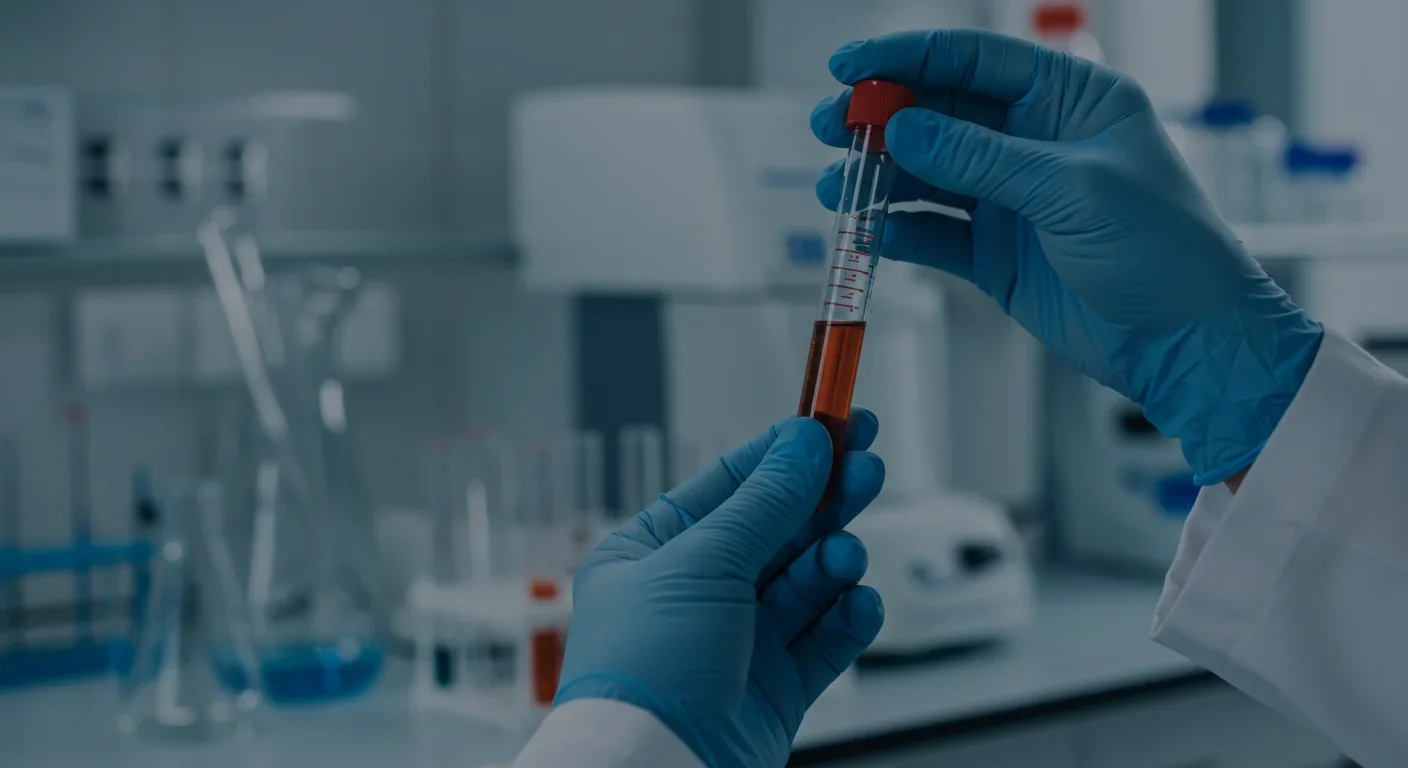Why Your Brain Sees Gods and Ghosts in Random Events

TL;DR: Your traits emerge from a collaboration between genes and environment, not a competition. Twin studies reveal intelligence is 40-82% heritable depending on age, but the remaining variation offers enormous space for environmental influence and personal choice.

Every time you make a choice, every time you react to stress, every time you think a certain way, you're experiencing the outcome of an ancient collaboration. Your genes didn't write your story alone, and neither did your environment. They've been working together since day one, and the latest science is finally revealing just how intricate this partnership really is.
For decades, we've been stuck in a false debate: nature versus nurture, genes versus environment, biology versus experience. But that's like asking whether a cake is made of flour or eggs. The truth? You need both, and they interact in ways that would have seemed like science fiction just twenty years ago.
Scientists have a favorite research tool for untangling genetic influence from environmental effects: twins. Identical twins share 100% of their DNA, while fraternal twins share about 50%, just like regular siblings. By comparing how similar these two groups are on various traits, researchers can estimate how much genes contribute.
The results have been eye-opening. Studies on twins raised apart show IQ correlations of 0.70 to 0.80, even when those twins grew up in completely different homes. That's remarkably high. For context, the correlation between your height and your parent's height is about 0.80.
But here's where it gets fascinating: the genetic influence on intelligence actually increases with age. At age nine, the heritability of IQ is about 41%. By seventeen, it's 66%. In adulthood, it reaches 82%. This seems counterintuitive—shouldn't more life experience mean more environmental influence?
Not exactly. As we age, we gain more freedom to choose our environments. Those genetic predispositions start expressing themselves more fully because we're actively seeking out experiences that match our inherent tendencies. The kid who loves reading will find books, join book clubs, choose intellectually stimulating friends. Genes and environment aren't fighting—they're collaborating.
Let's talk about a personality trait that sounds negative but has some surprising upsides: neuroticism. Research shows that individual differences in neuroticism are substantially heritable, with twin studies placing estimates between 40% and 60%.
Here's the paradox: highly neurotic people worry more, experience more anxiety, and generally have higher stress levels. You'd think this would wreck their health. But studies have found something unexpected—neurotic individuals are diagnosed with cancer less frequently than their more relaxed counterparts.
Why? Because worry drives behavior. Highly neurotic people are obsessive about health maintenance. They notice symptoms early, visit doctors regularly, and catch problems before they become serious. Their genetic predisposition toward anxiety interacts with their environment to create a survival advantage through proactive healthcare.
The environmental contribution is crucial here. Twin studies show that shared family environment (growing up in the same household) exerts virtually no reliable influence on neuroticism. What matters are unique environmental differences—the specific experiences, relationships, and choices that only you encounter.
For most of the 20th century, we thought genes were fixed instructions. You inherited a specific DNA sequence, and that was that. Then came epigenetics, and everything got more interesting.
Epigenetics is like sticky notes on a cookbook. The recipes (your genes) don't change, but little markers decide which recipes get used, when, and how often. These markers respond to your environment—stress, nutrition, relationships, even the season you were born in.
This means your experiences can literally change how your genes express themselves, sometimes in ways that get passed down to your children. A groundbreaking study on resilience found SNP-based heritability of just 7.3%, suggesting that while genes contribute to our ability to bounce back from adversity, the vast majority of variation comes from environmental and epigenetic factors.
Recent genomic research has identified specific genetic variants associated with behavioral traits, but these variants typically have tiny individual effects. Most complex behaviors emerge from hundreds or thousands of genetic variants interacting with countless environmental factors.

One of the most damaging misconceptions about behavioral genetics is the idea that genes equal destiny. If a trait is "genetic," people assume it's unchangeable. That's not how biology works.
Intelligence is roughly 50% genetic, which means the other 50% is wide open to environmental influence. That's an enormous space for education, nutrition, cognitive training, and life experiences to shape outcomes. Even for highly heritable traits, predisposition doesn't equal predetermination.
Consider autism, which has one of the highest heritability estimates of any developmental condition—around 80% to 90% in twin studies. Yet environmental factors still matter tremendously. Prenatal exposures, early intervention, educational approaches, and social support dramatically affect outcomes, even though the underlying genetic vulnerability is strong.
The same pattern holds for depression, where genetic factors account for about 37% of variation. That leaves substantial room for life events, social connections, therapeutic interventions, and personal choices to influence whether someone develops the condition and how severe it becomes.
Here's where theory meets practice. Understanding your genetic predispositions isn't about resignation—it's about strategy.
Take addiction. Genetics accounts for 40% to 60% of addiction vulnerability, with variations in genes that affect dopamine signaling, stress response, and impulse control all playing roles. If you have a family history of addiction, you're not doomed to develop a substance use disorder. But you are someone who should probably be more cautious about alcohol, avoid recreational drugs, and build strong coping mechanisms for stress.
Environmental choices can compensate for genetic vulnerabilities. Research on genes and behavior shows that people with high genetic risk for various mental health conditions can achieve excellent outcomes through targeted environmental interventions—therapy, medication, lifestyle changes, social support.
The key insight is that genes set ranges, not fixed points. A recent study of identical twins raised in Korea and the United States revealed surprising differences in IQ scores despite identical genetics. The environments shaped how their genetic potential expressed itself.
So what should you do with this information? First, get curious about your family history. Not to resign yourself to genetic fate, but to understand your predispositions. Do mental health conditions run in your family? Heart disease? Exceptional longevity? These patterns give you clues about where you might be vulnerable and where you might have advantages.
Second, recognize that genetic tendencies are just tendencies. They're probabilities, not certainties. Scientists estimate that even highly heritable traits leave substantial room for environmental influence. Your choices matter, possibly more than you think.
Third, understand that gene-environment interactions cut both ways. Positive genetic predispositions still need the right environment to flourish. A genetic gift for music doesn't matter if you never touch an instrument. Conversely, challenging genetic starting points can be overcome with intentional environmental design.
As genetic testing becomes cheaper and more accessible, we're entering tricky ethical territory. Direct-to-consumer genetic tests can now tell you about predispositions for hundreds of conditions and traits. This information can be empowering—or anxiety-inducing.
There are privacy concerns, too. Your genetic information doesn't just belong to you; it reveals information about your relatives. Insurance companies, employers, and even law enforcement have interests in this data. Some research has examined how genetic variation is distributed across human populations, raising concerns about potential misuse of genetic information to reinforce social inequalities.
Future genetic counseling will need to navigate these complexities carefully. The goal isn't to tell people their genetic destiny—it's to help them understand their genetic starting points and make informed decisions about their environments and behaviors.

The cutting edge of behavioral genetics research has moved beyond asking "how much is genetic?" to asking "how do genes and environment interact dynamically over time?" The partnership model frames nature and nurture as collaborators, not competitors.
Your genes provide a range of potential outcomes. Your environment, including your choices within that environment, determines where you land within that range. And here's the beautiful part: as you interact with your environment, you create feedback loops. Your genetic tendencies influence the environments you select, which in turn shape how your genes express themselves.
Identical twins can look different despite identical DNA because their unique experiences—sun exposure, diet, stress, injuries—create epigenetic changes that alter gene expression. Over decades, these small differences accumulate.
In the next decade, we'll likely see genetic information become part of routine healthcare. Imagine visiting a doctor who knows your genetic vulnerabilities and can recommend truly personalized prevention strategies. Imagine educational systems that recognize genetic variation in learning styles and adapt accordingly, not to limit anyone but to optimize each student's potential.
We're also likely to see continued breakthroughs in understanding gene-environment interactions at the molecular level. New genome-wide association studies are identifying genetic variants that only matter in certain environmental contexts, revealing just how context-dependent our biology really is.
Recent neuroscience research has begun mapping how environmental experiences create lasting changes in brain structure and function, changes that interact with genetic predispositions to shape behavior. Studies on specific populations are revealing how gene-environment interactions vary across different cultural and environmental contexts.
The future of behavioral genetics isn't about genetic determinism. It's about genetic literacy—understanding that you're the product of an ongoing conversation between your DNA and your world. That conversation started before you were born, continues every moment of your life, and in some ways, extends beyond your lifetime through epigenetic inheritance.
Here's what decades of research ultimately reveal: you're not trapped by your genes, but you're not starting from scratch either. You inherited predispositions—some helpful, some challenging, most somewhere in between. What you do with those predispositions depends largely on the environments you encounter and create.
The science shows that the old nature-versus-nurture debate was asking the wrong question. It's not "which one matters more?" It's "how do they work together to make us who we are?"
Understanding this doesn't mean obsessing over genetic tests or feeling powerless in the face of heredity. It means recognizing that while you didn't choose your starting point, you have substantial influence over where you go from here. Your genes set the stage, but you're still directing the play. That's not a limitation—it's an opportunity.

Recent breakthroughs in fusion technology—including 351,000-gauss magnetic fields, AI-driven plasma diagnostics, and net energy gain at the National Ignition Facility—are transforming fusion propulsion from science fiction to engineering frontier. Scientists now have a realistic pathway to accelerate spacecraft to 10% of light speed, enabling a 43-year journey to Alpha Centauri. While challenges remain in miniaturization, neutron management, and sustained operation, the physics barriers have ...

Epigenetic clocks measure DNA methylation patterns to calculate biological age, which predicts disease risk up to 30 years before symptoms appear. Landmark studies show that accelerated epigenetic aging forecasts cardiovascular disease, diabetes, and neurodegeneration with remarkable accuracy. Lifestyle interventions—Mediterranean diet, structured exercise, quality sleep, stress management—can measurably reverse biological aging, reducing epigenetic age by 1-2 years within months. Commercial ...

Data centers consumed 415 terawatt-hours of electricity in 2024 and will nearly double that by 2030, driven by AI's insatiable energy appetite. Despite tech giants' renewable pledges, actual emissions are up to 662% higher than reported due to accounting loopholes. A digital pollution tax—similar to Europe's carbon border tariff—could finally force the industry to invest in efficiency technologies like liquid cooling, waste heat recovery, and time-matched renewable power, transforming volunta...

Humans are hardwired to see invisible agents—gods, ghosts, conspiracies—thanks to the Hyperactive Agency Detection Device (HADD), an evolutionary survival mechanism that favored false alarms over fatal misses. This cognitive bias, rooted in brain regions like the temporoparietal junction and medial prefrontal cortex, generates religious beliefs, animistic worldviews, and conspiracy theories across all cultures. Understanding HADD doesn't eliminate belief, but it helps us recognize when our pa...

The bombardier beetle has perfected a chemical defense system that human engineers are still trying to replicate: a two-chamber micro-combustion engine that mixes hydroquinone and hydrogen peroxide to create explosive 100°C sprays at up to 500 pulses per second, aimed with 270-degree precision. This tiny insect's biochemical marvel is inspiring revolutionary technologies in aerospace propulsion, pharmaceutical delivery, and fire suppression. By 2030, beetle-inspired systems could position sat...

The U.S. faces a catastrophic care worker shortage driven by poverty-level wages, overwhelming burnout, and systemic undervaluation. With 99% of nursing homes hiring and 9.7 million openings projected by 2034, the crisis threatens patient safety, family stability, and economic productivity. Evidence-based solutions—wage reforms, streamlined training, technology integration, and policy enforcement—exist and work, but require sustained political will and cultural recognition that caregiving is ...

Every major AI model was trained on copyrighted text scraped without permission, triggering billion-dollar lawsuits and forcing a reckoning between innovation and creator rights. The future depends on finding balance between transformative AI development and fair compensation for the people whose work fuels it.